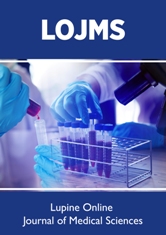
Lupine Publishers Group
Lupine Publishers
Menu
ISSN: 2641-1725
Review Article(ISSN: 2641-1725) 
The Body Electric: Humans Have A ‘Force Field’ Around Their Bodies Volume 4 - Issue 1
Robert Skopec*
- Researcher-analyst, Dubnik, Slovakia
Received: October 28, 2019; Published: November 06, 2019
*Corresponding author: Robert Skopec, Researcher-analyst, Dubnik, Slovakia
DOI: 10.32474/LOJMS.2019.04.000177
Abstract
Bioelectronic medicine (BEM) is the most recent medical revolution — not an innovation or an improvement or a step up but a radical reimagining of our understanding that it should be possible to treat human illnesses using electrical signals to replace some drugs. The implications may change the approach to developing future medicine; looking at who has already joined the efforts to further develop this field, the likelihood of a decades-long transition is high. Support from the National Institutes of Health, Defense Advanced Research Projects Agency (DARPA) and GlaxoSmithKline (GSK), one of the leading pharmaceutical companies, has already begun to write this chapter in mankind’s struggle against disease.
Keywords: Bioelectronic medicine (BEM); the most recent medical revolution; force fields, electrical signals; replace drugs; the vagus nerves; turn off inflammation; the peripersonal space
Introduction
A revolution, Napoleon said, can be neither started nor stopped. In medicine it happens over decades. The emergence of cardiac stents, for example, revolutionized the use of coronary bypass surgery and provided nonsurgical options for millions of patients; decades later their use continues to be debated and improved. This work is based on the relatively simple concept that nerves, which affect nearly every cell in your body, can be controlled with electrical signals. The pursuit of these research goals is guided by three principles that I believe can be broadly applied to achieving worthwhile objectives.
The first principle is to follow your imagination. At the time I began my work on bioelectronics, circa 1998, you could have searched through textbooks and found that nerves ended in lymph nodes, thymus, spleen and other sites where certain immune cells resided. And it was generally known that immunological diseases were the result of white blood cells floating through the blood vessels, jumping into action to produce inflammation and disease. It was dogmatic that the neuroendocrine system could regulate the immune system, and that neurotransmitters could alter immune cell functions, but it was unimaginable that discrete neural reflex circuits regulated these systemic inflammatory responses. The immune system was studied as an autonomous, self-regulating system, outside the intimate reach required for specific neural circuits to function [1].
When I first imagined challenging that assumption, based on my own observations as a neurosurgeon and immunology researcher, as well as on the work of scientists who preceded me, many of my colleagues were stunned. During one of the first experiments I conducted, several members of my own lab good-naturedly placed bets against this idea. The discoveries, however, and those of other pioneers in this field, were unequivocal: Electricity delivered to the vagus nerve regulates the immune system-the nerve signals turn off inflammation, in a manner that can replace anti-inflammatory drugs.
Naturally, such a discovery - since clinically tested on rheumatoid arthritis patients in Europe using a device that takes about 30 minutes to implant during a clinical trial run by a company I co-founded — is likely to have far-reaching implications. One implication has to do with pharmaceuticals designed on the basis of their highly specific interactions with a particular target. Once in the body, however, these specific molecules travel throughout the bloodstream, where unforeseen side effects can arise in numerous organs. The promise of bioelectronic medicine is that by targeting a specific organ, at a specific time, in a specific amount, many side effects can be eliminated. Prescription refills can be accomplished through a wireless interface. There will be no more daily injections, and no interruption to daily life. The potential exists for developing treatments for ailments ranging from rheumatoid arthritis to Parkinson’s to diabetes to cancer; the immune system contributes to all of these. Now, one can imagine a day when the products of a robust bioelectronic medicine industry replace many chemical and biological staples in the drug industry altogether [2].
This is where the second principle comes in: Collaborate, don’t compete. To bring bioelectronics - or any other visionary accomplishment-to life, it’s crucial to step outside your own ecosystem and find the right, and perhaps unexpected, people who share your imagination. Collaboration between the drug industry, with its expertise in clinical trials and regulatory approval of effective therapies for countless diseases, and the emerging bioelectronic medicine industry has accelerated the revolution. Pharmaceutical giant GSK has invested in a bioelectronic medicine company I co-founded and launched a more-than-$50-million effort to promote necessary technological and neurophysiological work in research laboratories across the globe. The success of these endeavors requires ongoing investment in the underlying science to answer the major new questions arising within this new field of bioelectronic medicine [3].
The early investments in bioelectronic medicine came from government sources. For more than 50 years the NIH, the major research funding body in the United States, and DARPA have been on the leading edge of U.S. science, ranging from sequencing the human genome to creating the Internet. Both of these bodies have supported bioelectronic medicine research at a time when the idea was nearly unimaginable, and their support was crucial. Now the success of bioelectronic medicine will only be fully realized when an alliance is forged between transdisciplinary experts in many fields of science and technology, each bringing her or his diverse perspective to the table.
The third principle is persistence. The work of science and innovation can be complex, and not all important scientific discoveries were preplanned. But all have required time and persistence to be fully utilized, embraced, and perfected. The accidental discovery of penicillin is widely known. Less discussed is the decades of work by hundreds of people, whose names are lost to history, required to perfect manufacturing and distribution, and to optimize its use. I hope that the launching of BEM will provide a better life for millions of people; that can be hard to imagine. It is sometimes more comprehensible to hone your vision through the eyes of a single patient, like Mirela Mustacevic, a rheumatoid arthritis patient highlighted in The New York Times Magazine this past weekend. Her story of success following treatment with an implanted vagus nerve stimulator brought tears of joy to many readers, including me. The article also prompted scores of emails from people suffering from a host of conditions, evidence of a pentup demand within the patient community for what bioelectronic medicine may produce: a side-effect-free, straightforward, economical, and highly effective way to fight the diseases that gnaw away life [4,5].
With collaborators banded together underneath a very big tent of research, financial support, and development, I believe that it is only a matter of time before bioelectronic medicine fulfills its promise. It is likely that this will produce a bigger, broader impact than cardiac stents, which are used daily in every major hospital. When it does, physicians will have new tools in their armamentarium, clinical trials will be more patient-specific, and the number of therapies using electricity will rival the number using biological agents. But that’s not the important part. What matters most to me is that by implanting one device for one disease, it should be possible to eliminate suffering and pain in individual patients. That’s a real revolution [6].
Bioelectronic Medicine Could Disrupt the Drug Industry
Bioelectronic medicine uses device technology to control cell behavior by analyzing and reproducing electrical signals sent out by the nervous system to the rest of the body
The technology, still in experimental stages, will not only transform treatment options for disease and injury, it could also cause significant disruptions to the drug industry, according to Kevin Tracey, MD, president and CEO of The Feinstein Institute for Medical Research in Manhasset, N.Y.
Dr. Tracey laid the groundwork for bioelectronic medicine in the late 90s through an accidental finding in his lab. Since then, he’s led the study on the molecular basis for inflammation and — with colleagues — developed implantable devices capable of sending electrical signals to the body that limit inflammation [7].
Along with his role as president of the Feinstein Institute - the research hub of Great Neck, N.Y.–based Northwell Health - Dr. Tracey serves as director of the Institute’s Laboratory of Biomedical Science and as a professor of molecular medicine and neurosurgery at the Hofstra Northwell School of Medicine in Hempstead, N.Y.
When did bioelectronic medicine get its start?
The real discovery that launched this field came from an accidental experiment in my lab in 1998. We were working on a molecule to block inflammation, which is a very important issue. Drugs that block inflammation are a $50 billion market. We put the anti-inflammatory molecule into the brains of mice and rats and found it blocked inflammation, as expected. The accident, or surprise of the study, was that the same drug in the brain also blocked inflammation in the body of the animal. We deduced the brain was turning off inflammation in the spleen and liver by sending anti-inflammatory signals in the nerves. This unexpected discovery was the beginning of bioelectronic medicine [6,7].
Bioelectronic medicine will affect the cost of healthcare
It will be a disruptive phase of the business and new paths will need to be charted on the pricing of bioelectronic devices. All of this will come after we ensure the efficacy and safety of these devices. While it is too early to give a number, big bets are placed on bioelectronic devices’ disruption of healthcare [8,9].
I applaud the effort of GlaxoSmithKline and Verily Life Sciences - a subsidiary of Google parent Alphabet - for investing $715 million into this idea with its new biotech. It places a very high evaluation on the current field and shows at least one company thinks it will influence the finances of the drug world.
Bioelectronic treatments replacing drug treatments in the future
There is already a huge demand for modulating devices like cardiac stents or pacemakers. I think patients will demand bioelectronic treatments once they are proven effective because people hate the side effects of drugs. I get emails everyday from people inquiring about bioelectronic treatment because they hate side effects. Historically, devices become available in Europe first. We might see them come to Europe in the next few years and to the U.S. soon after that [10].
The future potential of bioelectronic medicine is based on understanding molecular mechanisms. That’s the key — making the devices doesn’t drive the field. In the next 20 years, we’ll see basic science unravel new basic mechanisms. That’s what the drug industry does. It always begins with a basic mechanism. Historically, the device industry hasn’t done that. Instead, it’s begun with the device. With bioelectronic medicine, we’re beginning to take a basic mechanism, just like the drug industry, and drive toward a molecular target — not just a mechanism [6,7].
Meeting the patients that have already benefited from it. I’ve worked on inflammation and neuroscience for 30 years, written hundreds of papers and started several companies. That’s all been wonderful, but none of it replaces the feeling you get from meeting a patient who couldn’t get dressed on his own, go to work or play with his kids before being treated with bioelectronic medicine. Seeing how the field has benefited patients -and knowing it’s just the tip of the iceberg - is most exciting. It’s just the beginning. The potential for this field to benefit millions of people is palpable [11].
Life spread across universe like an ‘epidemic’ in new math theory
If life can spread from star to star, researchers should see a characteristic pattern of overlapping growth. In this theoretical artist’s conception of the Milky Way galaxy, translucent green “bubbles” mark areas where life has spread beyond it As astronomers get closer to finding potential signatures of life on faraway planets, a new mathematical description shows how to understand life’s spread - and to determine if it’s jumping from star to star.
If life arose on other planets, did it spontaneously grow from raw materials every time? Or did it dart from planet to planet and star to star, spreading across the universe? Telltale mathematical patterns of where life signatures appear could reveal the answer, authors of the new research said.
“Life could spread from host star to host star in a pattern similar to the outbreak of an epidemic,” study co-author Avi Loeb of the Harvard-Smithsonian Center for Astrophysics (CfA) said in a statement. “In a sense, the Milky Way galaxy would become infected with pockets of life.” [10 Alien Planets That May Support Life] The concept of life spreading across different planets and stars is called panspermia - whether microscopic organisms hitch a ride on an asteroid or intelligent beings plot a course for new horizons. Mathematically, both of those situations would show the same basic pattern, the new research shows.
“In our theory, clusters of life form, grow and overlap like bubbles in a pot of boiling water,” the study’s lead author Henry Lin, also at CfA, said in the same statement. With that kind of growth, life would fill the universe much more quickly than if it arose only through spontaneous development. As telescopes increase in power and researchers learn more about the substances and conditions, spotted from afar, that would herald extraterrestrial life, scientists get closer to potentially identifying such signs of life on other planets. And if life appears in distinct clusters that contain many different stars, it makes it much more likely that organisms can proliferate across the galaxy.
The tricky part is identifying those patterns while embedded inside them, only able to see a certain selection of stars. According to the new research, humans could get lucky and be on the edge of a bubble of life; if that were the case, astronomers would glimpse many instances of life on one side of Earth, and few to none on the other. It would be clear that life is spreading instead of growing spontaneously each time. But even if Earth was in a less favorable location, statistical analysis of the life-filled spots discovered could still reveal the characteristic pattern.
The transfer of life from star to star, through a species’ exploration or by natural events in the galaxy, would drastically speed up the transition from an empty galaxy to a life-filled one, the researchers said in the paper. Then, it might be only a matter of time before humans ran up against something otherworldly [11].
We have a ‘force field’ around our bodies and here’s how you can feel it
We don’t end where our bodies end. You know what your
personal space is. Uninvited strangers invading it invoke an
immediate sense of unease. A bird flying over but too close to your
head may cause you to reflexively duck. It’s like we don’t just end
where our bodies end, but a little bit beyond [12,13].
Now researchers have figured out a way to make you “feel” the
invisible bubble that wraps around you. In a new study published in
the journal Cognition on June 24, neuroscientists at the Karolinska
Institute in Stockholm describe how they did this using an altered
version of the so-called rubber hand illusion. In the classic version
of the rubber hand illusion, a person is shown a fake rubber hand
placed in front of them while their own hand is hidden behind a
screen. If both real and fake hands are simultaneously stroked by a
brush for a few minutes, the person’s brain starts to accept the fake
hand as part of the body. To test this, just bring a knife or hammer
close to the fake hand and watch how someone reacts.
In the new experiments, the researchers repeated this
procedure but never actually touched the rubber hand. Instead, they applied brushstrokes in mid-air above it. Simultaneously,
they stroked the participant’s hidden real hand with real touch. A
few minutes later, the participants started to feel the rubber hand
was their own. What’s more, they started to sense what felt like a
“magnetic force” or a “force field” between the brush and the rubber
hand, according to the study.
“We can elicit this bizarre sensation of there actually being
something in mid-air between the brush and the rubber hand,”
Arvid Guterstam of the Karolinska Institute, a co-author of the study,
told New Scientist. The finding plugs into research stretching to the
1990s that has suggested the brain has a mechanism to recognize
the immediate space around the body, said neuroscientist Michael
Graziano of Princeton University, who wasn’t involved with the new
study but has researched the topic. “The space around the body is
processed like a jello mold. Like a thick layer of space around the
body, deforming and moving as the limbs move,” Graziano told the
Huffington Post. The illusory effect in the experiments started to
fade if the brushstroke went higher than about 15 inches above the
rubber hand. In other words, that’s as far as your “force field” goes
[14].
Your “peripersonal” space
Our brains contain a high-resolution map of our bodies. There
are patches of neurons that respond to touch on your toes, their
neighboring neurons respond to touch on your leg, and so on.
But there are also groups of neurons in charge of recognizing the
immediate space around the body, which is called the peripersonal
space.
That space has several purposes, but its most important function
is defense. This extended body representation in the brain may help
us quickly detect approaching dangers. It also seems essential for
our ability to move our limbs to pick up an object without knocking
everything else over, walk through a door without hitting the door
frame or make it through a crowd without bumping into people
[15,16].
The discovery of peripersonal space goes back to animal studies
conducted by Graziano and his colleagues at Princeton University
in early 1990s. And it was a somewhat serendipitous discovery.“We
were trying to study visually responsive neurons in an obscure
part of the brain - the claustrum - but we ended up finding more
interesting signals in a nearby part of the brain, the basal ganglia,”
Graziano said.
The researchers stumbled on neurons that responded to both
touch and vision. The same neuron would become active if you
touched the body in a specific area and when you moved a visible
object into a region of space near that area. Other scientists had
described similar neurons in other brain regions, so the Princeton
researchers followed the trail.
“At that time, nobody knew the function of these neurons,”
Graziano said. “It was not until our experiments in the early 2000s
that we realized they primarily emphasized the protection of the
body. When we electrically stimulated those neurons, revving them
up, the stimulation would induce a complex, coordinated behavior
that resembled ducking or blocking.”
For example, Graziano explained, if the neurons responded to
touching the right side of the face and also to the sight of objects
looming toward the right side of the face, then electrical stimulation
of those neurons would cause the subject to squint, turn the head
toward the left, hunch the right shoulder and lift the right hand to
a blocking posture near the face. This movement was so automatic
that it could be evoked even under anesthesia. [17] “We now
understand these peripersonal space neurons are important in
monitoring the margin of safety around the body,” Graziano said.
Shifting Boundaries
Most data on these neurons comes from monkeys, but brain
scans of humans have revealed similar groups of neurons in our
brains. And sometimes, people with certain types of brain damage
lose their ability to process the peripersonal space.
“These people have no trouble processing distant space, but
lose a sense of peripersonal space,” Graziano said.
There’s reason to think that our fluid force field is also
extendable, Graziano said. Just think about how, when driving a car,
you have a sense of where the car’s boundaries end so you don’t hit
other objects. Or put on a tall hat and see how it feels after a few
hours.
Converting cancer cells to fat cells to stop cancer’s spread
A method for fooling breast cancer cells into fat cells has been
discovered by researchers from the University of Basel. The team
were able to transform EMT-derived breast cancer cells into fat
cells in a mouse model of the disease – preventing the formation
of metastases. The proof-of-concept study was published in the
journal Cancer Cell.
Malignant cells can rapidly respond and adapt to changing
microenvironmental conditions, by reactivating a cellular process
called epithelial-mesenchymal transition (EMT), enabling them
to alter their molecular properties and transdifferentiate into a
different type of cell (cellular plasticity) [18,19].
Senior author of the study Gerhard Christofori, professor of
biochemistry at the University of Basel,commented in a recent
press release: “The breast cancer cells that underwent an EMT
not only differentiated into fat cells, but also completely stopped
proliferating”. “As far as we can tell from long-term culture
experiments, the cancer cells-turned-fat cells remain fat cells and
do not revert back to breast cancer cells,” he explained.
Epithelial-mesenchymal transition and cancer
Cancer cells can exploit EMT – a process that is usually
associated with the development of organs during embryogenesis
– in order to migrate away from the primary tumor and form
secondary metastases. Cellular plasticity is linked to cancer
survival, invasion, tumor heterogeneity and resistance to both
chemo and targeted therapies. In addition, EMT and the inverse
process termed mesenchymal-epithelial transition (MET) both play
a role in a cancer cell’s ability to metastasize [20].
Using mouse models of both murine and human breast cancer
the team investigated whether they could therapeutically target cancer cells during the process of EMT – whilst the cells are in a
highly plastic state. When the mice were administered Rosiglitazone
in combination with MEK inhibitors it provoked the transformation
of the cancer cells into post-mitotic and functional adipocytes (fat
cells). In addition, primary tumor growth was suppressed and
metastasis was prevented [21].
Christofori highlights the two major findings in the study:
“Firstly, we demonstrate that breast cancer cells that undergo an
EMT and thus become malignant, metastatic and therapy-resistant,
exhibit a high degree of stemness, also referred to as plasticity. It is
thus possible to convert these malignant cells into other cell types,
as shown here by a conversion to adipocytes”.
“Secondly, the conversion of malignant breast cancer cells into
adipocytes not only changes their differentiation status but also
represses their invasive properties and thus metastasis formation
and their proliferation. Note that adipocytes do not proliferate
anymore, they are called ‘post-mitotic’, hence the therapeutic
effect”. Since both drugs used in the preclinical study were FDAapproved
the team are hopeful that it may be possible to translate
this therapeutic approach to the clinic.
“Since in patients this approach could only be tested in
combination with conventional chemotherapy, the next steps
will be to assess in mouse models of breast cancer whether and
how this trans-differentiation therapy approach synergizes with
conventional chemotherapy. In addition, we will test whether the
approach is also applicable to other cancer types. These studies will
be continued in our laboratories in the near future”[16].
Conclusion
Our brains are aware not just of our bodies but also the
immediate space around us. Now, a twist on the classic rubber hand
illusion can make people feel this space – a sensation they liken to
perceiving a “force field”. Neuroscientists have known for decades
that our brains contain representations of the area surrounding us,
known as peripersonal space. This allows us to grasp objects within
our reach and helps to protect us.
Imagine you are walking through the woods talking to a
companion, when a low-hanging branch suddenly appears in your
peripheral vision. You’ll instinctively duck to avoid it: your sense of
peripersonal space has prevented you from banging your head [20].
Hard neuroscientific evidence on the force fields phenomenon
appeared in the late 1990s in animal studies. Michael Graziano of
Princeton University, New Jersey, and his colleagues recorded the
electrical activity of neurons in the parietal and frontal lobes of the
brains of monkeys, finding that some neurons fired not only when
an object touched part of the body, but also when the object came
near it. When the researchers directly stimulated such neurons,
they found that the monkeys would reflexively move their heads
and limbs as if defending themselves – for example, grimacing and
closing their eyes, turning their heads to one side and putting up
their arms in a protective posture.
Although no one has repeated the experiments in humans,
there is evidence that certain regions of our brain specifically
deal with peripersonal space. For instance, some people who
suffer strokes in the right posterior parietal lobe cannot sense
peripersonal stimuli on the left side of their bodies, but can sense
things that are further away, outside the peripersonal space on that
side [19,20]. “This suggests that there is a representation similar to
those found in monkeys in the human brain,” says Arvid Guterstam
of the Karolinska Institute in Stockholm, Sweden.
Actually feeling our peripersonal space
At least, that’s the theory. Now, Guterstam and his colleagues
have tricked humans into actually feeling our peripersonal space.
To do so, they turned to the well-known rubber hand illusion. In the
standard form of this illusion, the experimenter uses a paintbrush
to stroke a volunteer’s hand (which is hidden from view) and an
adjacent, visible rubber hand. The stroking is done simultaneously
at the same speed and place on both the real and rubber hand.
Within minutes, most people report feeling the touch of the
brushstrokes on the rubber hand as if it belonged to them.
Researchers noticed that the phenomenon didn’t work if the
rubber hand was too far away from the real hand.
In the new study, which involved 101 adults, the researchers
made one important change to the experiment. They never brushed
the rubber hand directly. Instead, they moved the brush above the
rubber hand, again at the same time as brushstrokes that touched
the real hand.
This meant the volunteer felt touch on their real hand but
watched the brush move in mid-air, say, about 10 – 40 centimetres
above the rubber hand. Most volunteers reported feeling a
“magnetic force” or “force field” between the paintbrush and the
rubber hand below – as if the brush was encountering an invisible
barrier.“We can elicit this bizarre sensation of there actually being
something in mid-air between the brush and the rubber hand,” says
Guterstam. The volunteers also felt a sense of ownership of the
rubber hand [19,20].
The team found that the phenomenon disappears when the
brushstrokes are more than about 30-40 centimetres above the
rubber hand. This distance seems to be the limit of the peripersonal
space of any given body part.
The force field also disappears if there is an opaque metal
barrier between the rubber hand and the brush. Because the
barrier makes it impossible for the hand to reach up and grasp
anything, or for anything to hit the hand, the space above is now not
peripersonal space, Guterstam speculates.
For decades, the neuroscience of the parietal and frontal lobes
has filled in our knowledge of the special margin of safety, or buffer
zone around the body. Now we have a clever way to get at the
phenomenon of the force fields that is easy to implement in the lab
[22-25].
Conflict of Interests & Disclosure
The Author declares no conflict of Interests.
References
- Shergill SS, Bays PM, Frith CD, Wolpert DM (2003) Two Eyes for an Eye: The Neuroscience of Force Escalation. Science 301(5630): 187-187.
- Kilteni K, Ehrsson HH (2017) Body ownership determines the attenuation of self-generated tactile sensations. Proc Natl Acad Sci 114(31): 8426-8431.
- Blakemore SJ, Wolpert DM, Frith CD (1998) Central cancellation of self-produced tickle sensation. Nat Neurosci 1(7): 635-640.
- Ferri F, Chiarelli AM, Merla A, Gallese V, Costantini M (2013) The body beyond the body: expectation of a sensory event is enough to induce ownership over a fake hand. Proc R Soc B Biol Sci 280(1765): 20131140.
- Ferri F, Costantini M, Salone A, Di Iorio G, Martinotti G, et al. (2014) Upcoming tactile events and body ownership in schizophrenia. Schizophr Res 152(1): 51-57.
- Guterstam A, Zeberg H, Özçiftci VM, Ehrsson HH (2016) The magnetic touch illusion: A perceptual correlate of visuo-tactile integration in peripersonal space. Cognition 155: 44-56.
- Guterstam A, Szczotka J, Zeberg H, Ehrsson HH (2018) Tool use changes the spatial extension of the magnetic touch illusion. J Exp Psychol Gen 147(2): 298-303.
- Ferri F, Ambrosini E, Pinti P, Merla A, Costantini M (2017) The role of expectation in multisensory body representation–neural evidence. Eur J Neurosci 46(3): 1897-1905.
- Makin TR, Holmes NP, Ehrsson HH (2008) On the other hand: dummy hands and peripersonal space. Behav Brain Res 191(1): 1-10.
- Tsakiris M (2010) My body in the brain: a neurocognitive model of body-ownership. Neuropsychologia 48(3): 703-712.
- Botvinick M, Cohen J (1998) Rubber hands “feel” touch that eyes see. Nature 391: 756.
- Skopec R (2019) Quantum Resourrection: Quantum Algorithm With Complex Conjugation Reverses Phases Of The Wave Function Components. Journal of Neuroscience and Neurological Surgery.
- Skopec R (2018) Evolution Continues with Quantum Biology and Artificial Intelligence. ARC Journal of Immunology and Vaccines 3(2): 15-23.
- Skopec R (2019) Naphazoline nitrate treat the frey effect of microwave and other sonic weapon’s damages in human’s internal, organs. Virology: Research & Reviews (1): 1-5.
- Skopec R (2019) Negative Health Effects of the International Space Station. Stem Cell Research International 3(2): 1-6.
- Skopec R (2019) Fifth Dark Force Completely Change Our Understanding of the Universe. Research Journal of Nanoscience and Engineering 3(2): 39-47.
- Skopec R (2019) Darwin’s Theorem Revised: Survival of the Careerist. Advancements in Cardiovascular Research 1(5): 89-93.
- Skopec R (2019) New Psychological Weapons Make Targets Hallucinate. Journal Of Neuropsychiatry And Neurodisorders 1(1): 1-6.
- Skopec R (2019) The Transfiguration with Self-Phase Modulation Effect of Entanglement in a Plasmatic Moving Frame. Current Trends in Biotechnology and Biochemistry.
- Skopec R (2019) Quantum Entanglement Entropy as Karma Lead to New Scientific Revolution. Journal of Engineering and Applied Sciences Technology 1: 1
- Skopec R Quantum Entanglement Entropy Produces Energy by Info-Entropy Fields Forces, Modern Approaches on Material Science.
- Ehrsson HH (2012) The Concept of Body Ownership and its Relation to Multisensory Integration. In: Stein B, editor. The Handbook of Multisensory Processes. Boston, USA.
- Moseley GL, Gallace A, Spence C (2012) Bodily illusions in health and disease: Physiological and clinical perspectives and the concept of a cortical ‘body matrix.’ Neurosci Biobehav Rev 36(1): 34-46.
- Blanke O, Slater M, Serino A (2015) Behavioral, Neural, and Computational Principles of Bodily Self-Consciousness. Neuron 88(1): 145-166.
- Ferri F, Costantini M (2016) Commentary: The magnetic touch illusion: A perceptual correlate of visuo-tactile integration in peripersonal space. Front Hum Neurosci 10: 492.

Top Editors
-
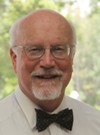
Mark E Smith
Bio chemistry
University of Texas Medical Branch, USA -

Lawrence A Presley
Department of Criminal Justice
Liberty University, USA -

Thomas W Miller
Department of Psychiatry
University of Kentucky, USA -
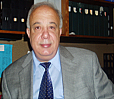
Gjumrakch Aliev
Department of Medicine
Gally International Biomedical Research & Consulting LLC, USA -
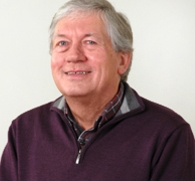
Christopher Bryant
Department of Urbanisation and Agricultural
Montreal university, USA -

Robert William Frare
Oral & Maxillofacial Pathology
New York University, USA -
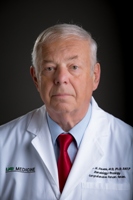
Rudolph Modesto Navari
Gastroenterology and Hepatology
University of Alabama, UK -
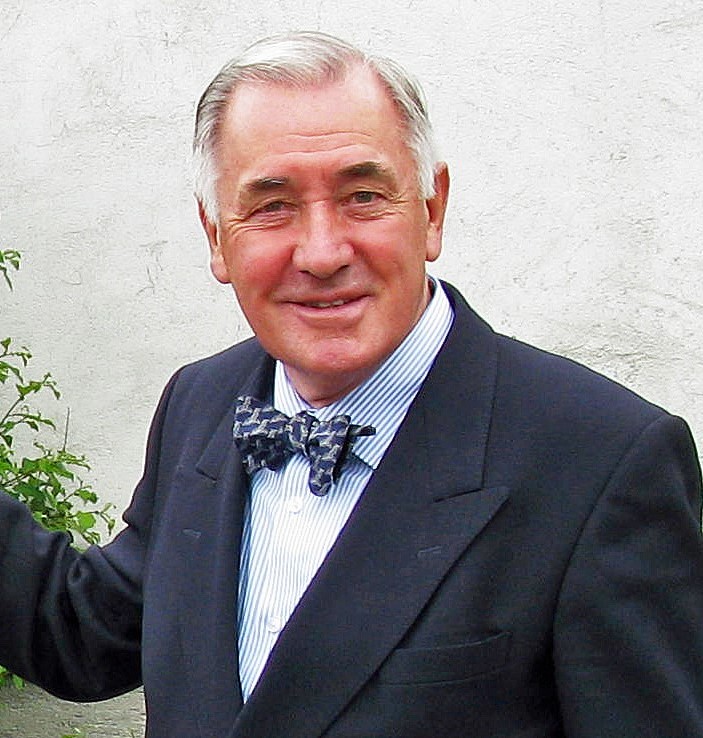
Andrew Hague
Department of Medicine
Universities of Bradford, UK -

George Gregory Buttigieg
Maltese College of Obstetrics and Gynaecology, Europe -
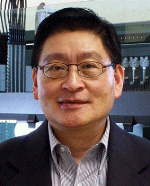
Chen-Hsiung Yeh
Oncology
Circulogene Theranostics, England -
.png)
Emilio Bucio-Carrillo
Radiation Chemistry
National University of Mexico, USA -
.jpg)
Casey J Grenier
Analytical Chemistry
Wentworth Institute of Technology, USA -
Hany Atalah
Minimally Invasive Surgery
Mercer University school of Medicine, USA -

Abu-Hussein Muhamad
Pediatric Dentistry
University of Athens , Greece

The annual scholar awards from Lupine Publishers honor a selected number Read More...




